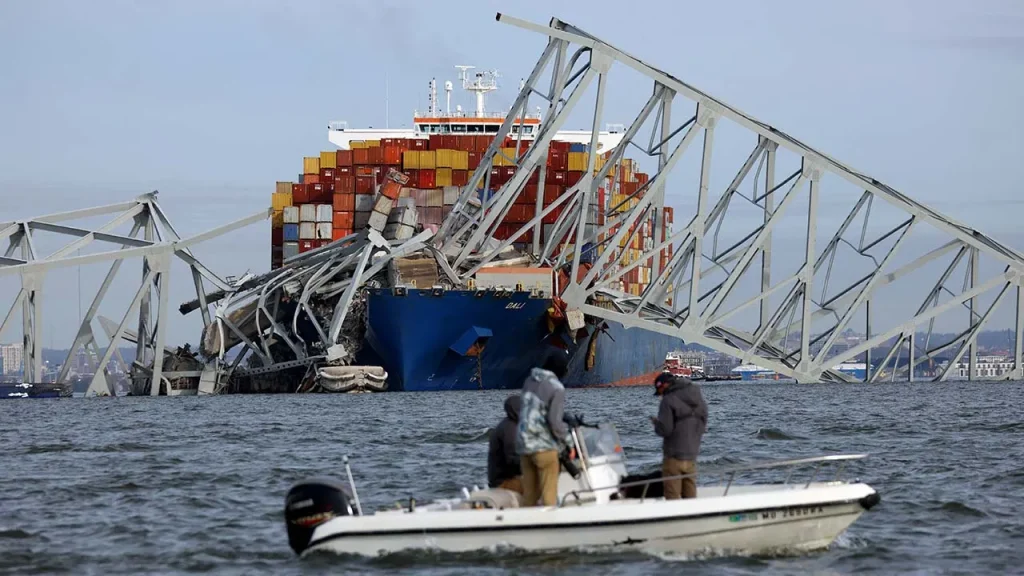Coast Guard Vice Adm. Peter Gautier revealed during a White House press briefing that there are 56 containers on the stricken cargo ship Dali that contain hazardous materials, out of a total of 4,700 containers onboard. However, he emphasized that there is currently no threat to the public as the majority of these containers are closer to the pilot house and have not been affected by the damage to the bow of the ship. Gautier also mentioned the importance of coordinating with the Army Corps of Engineers to remove the bridge debris sitting on the vessel bow before the ship can be removed from the bottom of the river.
Transportation Secretary Pete Buttigieg stated that the Coast Guard and Army Corps of Engineers will be working together to lead the cleanup efforts of the Patapsco River to allow the Port of Baltimore to return to full operation. He acknowledged that the rebuilding process will not be quick, easy, or cheap, but he assured that they are committed to getting it done. The collapse of the bridge, which occurred when the cargo ship collided with a critical support pier, is believed to have caused the death of six construction workers, who are still missing and presumed dead. The recovery mission to locate their bodies is ongoing.
Buttigieg highlighted the fact that the bridge, built in the 1970s, was not designed to withstand a direct impact from a vessel as large as the Dali, which weighs about 200 million pounds. This size discrepancy between the cargo ships in service when the bridge was built and the modern vessels poses a challenge for infrastructure built decades ago. Despite the long and difficult road ahead, he expressed confidence that the community in Baltimore will come together to rebuild and recover from this tragic event.
The Coast Guard and other agencies involved are focused on ensuring the safety of the public and mitigating any potential environmental hazards posed by the stricken cargo ship. Efforts will be made to carefully remove the bridge debris from the ship’s bow before it can be lifted out of the river, to minimize any further threats. The collaboration between different government entities and contractors is crucial in managing the aftermath of the bridge collapse and ensuring the safe removal of the vessel.
As the recovery mission continues, families of the missing workers and the community at large are grappling with the loss and devastation caused by the collapse of the Francis Scott Key Bridge. The tragic event has underscored the importance of ensuring the structural integrity of critical infrastructure and the need for adequate safeguards to prevent such accidents in the future. The government officials and rescue workers involved in the response efforts are dedicated to supporting the affected families and restoring the Port of Baltimore to full operational capacity.
In conclusion, the aftermath of the Baltimore bridge collapse has brought to light the challenges of maintaining and upgrading aging infrastructure to meet the demands of modern shipping vessels. The coordination and collaboration between different agencies and stakeholders are crucial in managing the cleanup and recovery efforts following this tragic event. The commitment to rebuilding and supporting the community, as expressed by government officials, reflects a determination to overcome adversity and come together in the face of a crisis. As the recovery mission continues, the focus remains on ensuring the safety of the public, mitigating environmental risks, and honoring the memory of the workers who lost their lives in the collapse.















